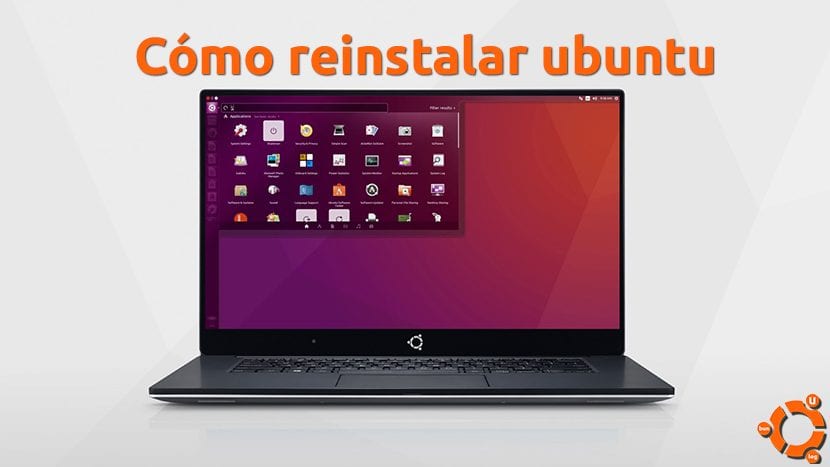
Although Ubuntu is a reliable and robust operating system that does not usually cause problems, we can always try things that cause us to experience crashes that we do not know how to fix. What can we do in that case? An alternative, which some of you will think is better and others that is not worth it, is reinstall Ubuntu. Reinstalling an Ubuntu-based operating system is a fairly simple process that we will explain below, as well as some reasons why we might want to do it and the differences between installation types.
Differences between Install, Reinstall and Update
- Install: using this option what we will be doing is eliminating the system that we have installed on our computer or installing it together with it using dual-boot. Everything would start from 0.
- Update- If we update the system, Ubuntu will try to keep all the files and settings that we would have made and would install a higher version of Ubuntu. This may be an option next October, when Ubuntu 16.10 Yakkety Yak is released.
- Reinstall: this is what we are going to explain in this post and what we will do is keep all the configuration and files, but the system will re-install itself trying to repair all the problems we are experiencing for whatever reason.
Reasons to reinstall Ubuntu
- One of the reasons may be that we have screwed up the GRUB and we cannot enter the system. Although it can be recovered otherwise, a user is likely to want to make sure to remove the root problem and prefer to reinstall Ubuntu.
- If we are one of those users who like to tweak everything, sometimes we can cause an annoying problem that we do not know how to locate. A good way to eliminate these types of stubborn problems is to reinstall the operating system.
- It may also be a good idea to reinstall Ubuntu if we want to clean up. It is not that Ubuntu needs it, but there are people a bit "hypochondriac" in this sense and from time to time they want to eliminate some problems (although in this case I would recommend installing from 0, that I am more hypochondriac in the software than anyone).
How to reinstall Ubuntu
- Although nothing has to happen, I would recommend making a backup copy of our personal folder, or at least the files we want to keep. Prevention is better than crying.
- With a backup made, we will create a bootable USB with Ubuntu. I would do it with UNetbootin, which is fast and reliable.
- We introduce the Ubuntu bootable USB into a USB port on our computer.
- We turn on the computer and select our Pendrive as the boot drive. The way to do this will depend on the computer. On my little AAO250 I had it set to enter the boot drive selection if I pressed F12, but you can also change the order to do so automatically. It is best to enter the BIOS and configure it to read the USB first, then the DVD drive, and then the hard drive.
- When starting from the USB we will see several options. We are interested in the one of «Try Ubuntu without installing»Or«Install Ubuntu«. The first will enter a Live Session and the second will directly enter the installer. If we want to connect to a hidden Wi-Fi network, the first option is better.
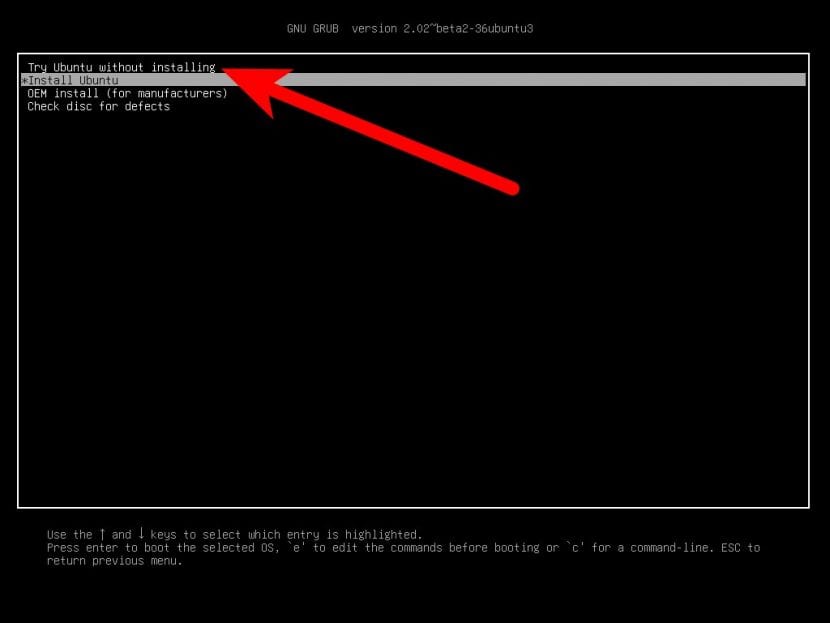
- If we have chosen the option to test the system without installing, we will have to double click on the "Install Ubuntu" icon. If not, we move on to the next step.
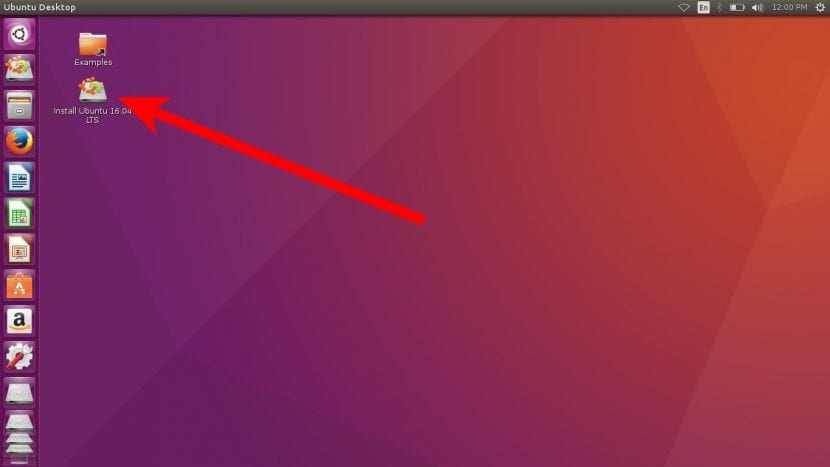
- Then we choose our language and click "Continue".
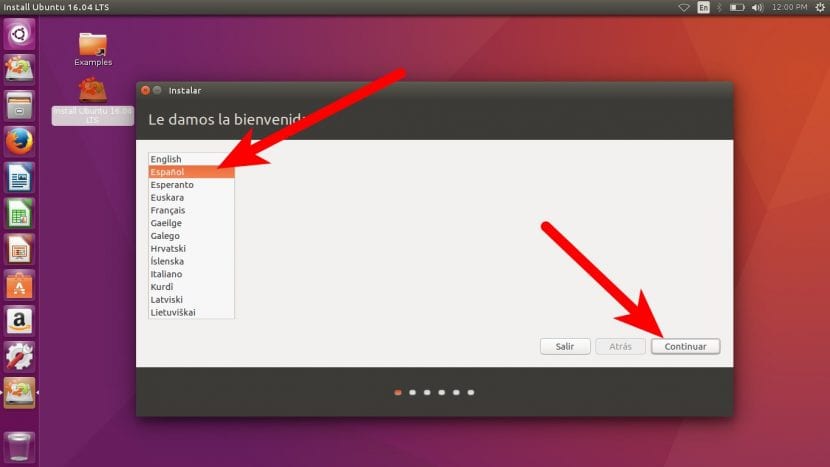
- On the next screen, I recommend checking both boxes and clicking Continue. If we do, we will have to connect to the internet. There is a step that will tell us if we want to connect to a Wi-Fi network, as long as we have not connected to the internet before starting the installation.
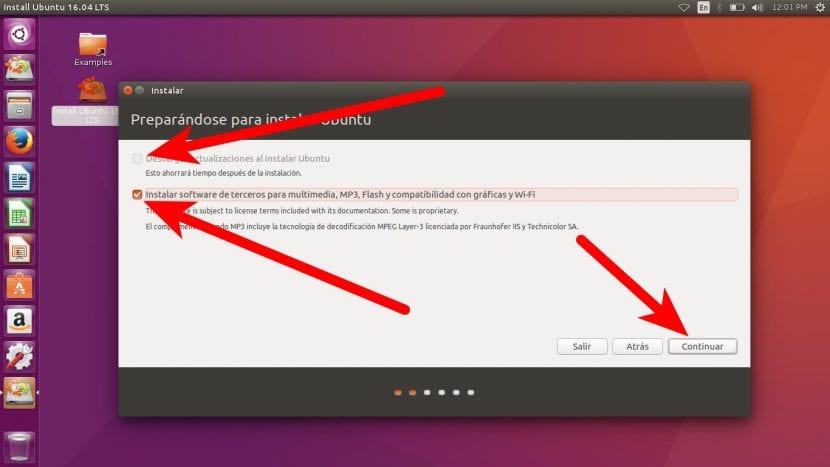
- In the next window, we choose the "Reinstall" option. It is not available to me because I also have a Windows partition.
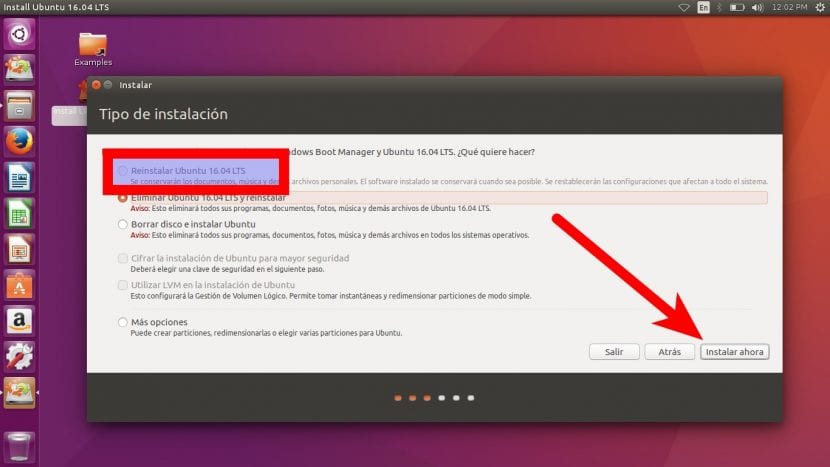
- We accept the notice that you will show us.
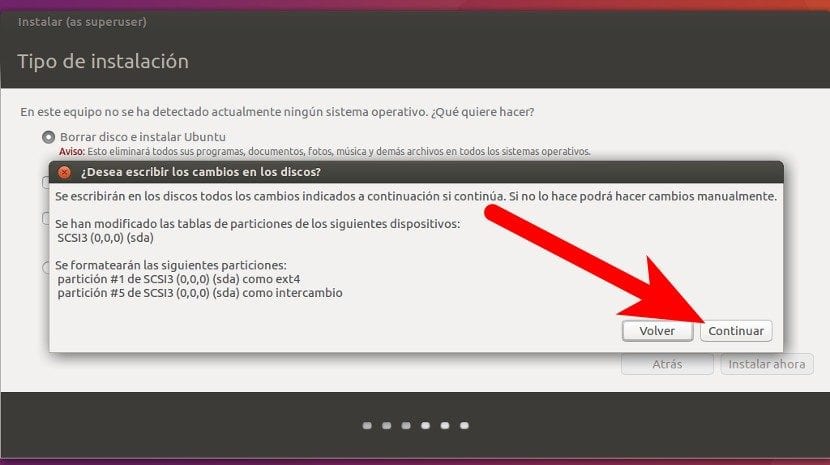
- Next, we select our time zone and click "Continue".
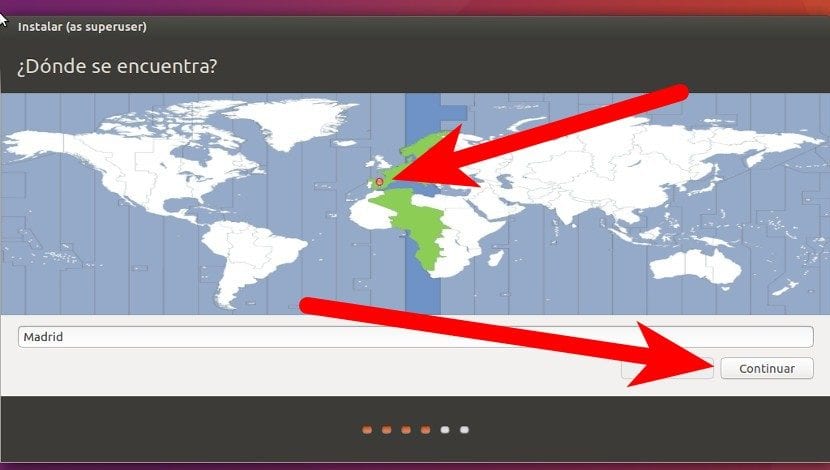
- We choose the keyboard layout and click "Continue". If you don't know which one it is, you can write it in the dialog box below so that it detects which one we use.
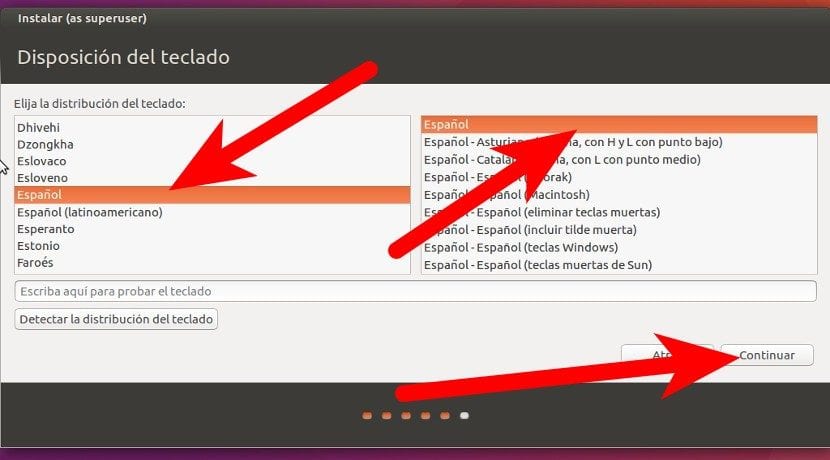
- In the next window, we have to create our user. We put our username, the name of our team, which is not important but it is what we will always see in the terminal, and password. Then we click on "Continue".
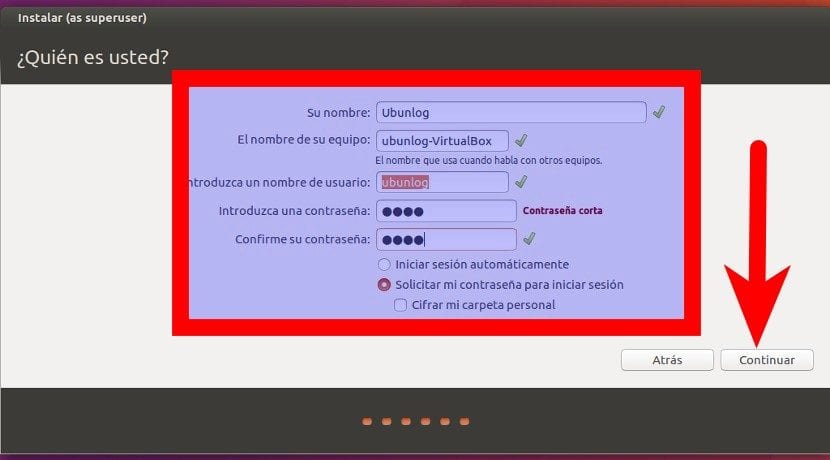
- Now we can only wait.
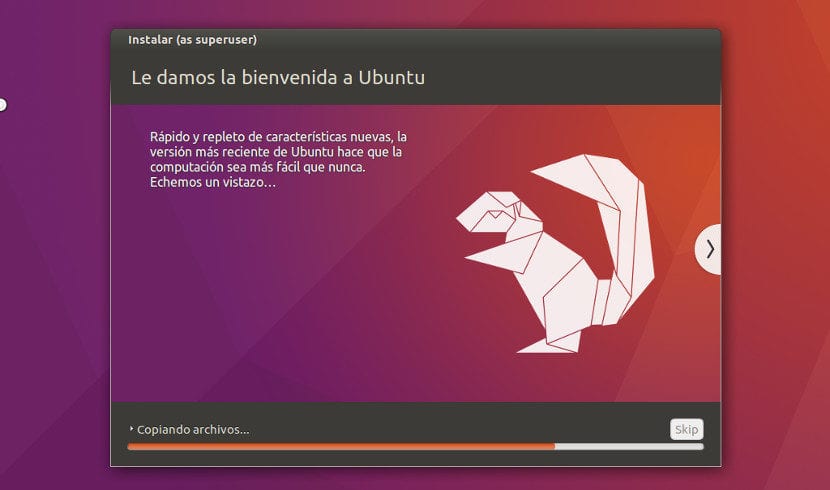
- When finished, we click on "Restart" to start the system. You will see an image like the following one, but with the Ubuntu background (this capture is from Ubuntu MATE):
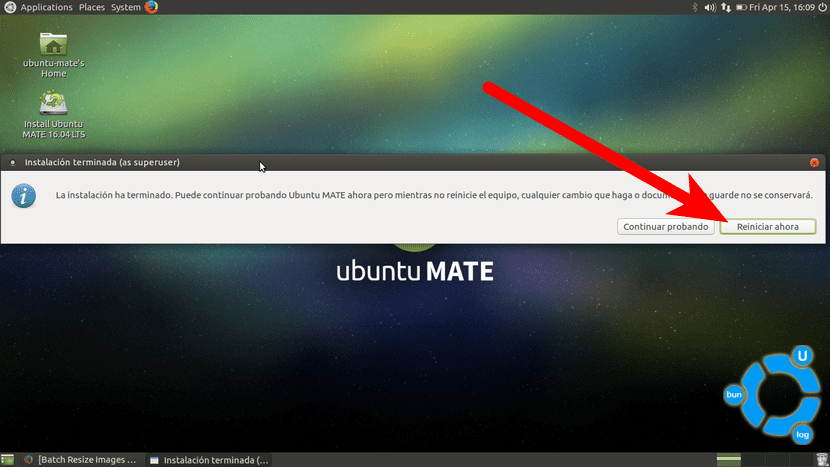
- If we have the BIOS configured to start from the USB, we will have to remove the pendrive before it starts or, otherwise, it will enter it again.
Have you already reinstalled Ubuntu? How have you been?
Just last night I re-installed it but I did it by formatting only the partition with the root so I kept the rest not everything but files, compiz downloads everything flawless
Hello Fabian. It is another option (I usually use it), but I would not call this method "Reinstall" because it will load the system. You do not start from 0 because, as you say, you keep the files and settings, but you do remove the applications from the system. When reinstalling, the applications are maintained and it only tries to repair what is not in place.
A greeting.
hi Pablo, and can you reinstall together with Windows?
Hello Mauricio. Yes, but the process is more complex. As Fabian comments, you can choose "more options" and tell it where to install. Here it will depend on how you have it installed.
For example: I have a partition with the system (root) and another with the personal / home folder. When I want to change systems without touching much, I enter "More options", I indicate that I install the system in the partition where I had the previous system without formatting it and with the / home folder I do the same. The problem with this is that, for example, if you install Elementary OS after Ubuntu 16.04, you will have many errors (it did not start me).
What I recommend is to have a partition for / home and another for the system. When I have a problem, when installing I choose "More options", then I indicate the root partition (for the system) and mark it to format. The home folder, I indicate it, but I do not format it. This, which is what Fabian says, is not "Reinstall", but personally I prefer to lift everything from the beginning and avoid dragging any possible bugs that I might have before.
A greeting.
Hi, Pablo. I am new to the Linux world and I want to know if it is possible to REINSTALL Elementary OS. It turns out that I have Freya on the same disk (different partitions) next to Windows. To install Elementary create 4 partitions: Swap. Boot, Home and Root. How could I reinstall without losing my installed settings, files and programs? Thanks in advance
Hi Ines. Yes you can, but to keep everything you have, in step 9 of this guide you have to choose "More options". There you would indicate which partitions you want to use. In your case, you would have to choose the Swap, Boot and Root partitions as such and, if you want, format them. To preserve the settings, you would have to select Home as Home, but not format that partition. Home is your personal folder, where you keep documents and configuration files, such as the .mozilla folder that stores all Firefox settings such as history, passwords, favorites, and installed add-ons.
A greeting.
Oh, I understand. Thank you Pablo. I think it's simpler than I imagined. A million thanks. I will do it on the weekend and I will tell you again how it went (I'm sure it will be very good). A hug. Thanks again. 🙂
One thing, I haven't seen it in a long time and right now I'm not sure if I said it correctly. I think the names home and root do not appear (swap I think they do). You will likely have to identify them first. I know it from the size that I gave to each partition. The root can also appear with the name of the operating system next to it.
A greeting.
Thanks Pablo, you are right. Partition names do not appear. I just started Elementary from a USB for testing. Look at how I selected everything, this is exactly how I'm going to do it: http://imgur.com/a/IgQdf Do you think it's okay? Look below, where it says "device where to install the boot loader" I have left it as when I installed from scratch.
Finally, I have a very serious question: if I format Boot and Root, will I lose all the previously installed programs, themes, icons, the repositories that I had added and even my current BURG customization (GRUB backwards, the custom bootloader that currently use)?
Yes. The bottom line is basically which disk you will make the changes to. There the total hard disk appears.
Regarding if you have it right, I think so, perfectly well and well distributed 😉 Of course, as long as you know that the capacities coincide and do not use, for example, the partition that you had as root in the new / home.
If you format the boot partition, you should not make any changes to the system. If you format the root, yes. Always speaking according to theory, if you format the root partition, you will have the new system, but you can recover the configuration of the programs that you reinstall. For example, if you had Firefox installed and you have formatted the root folder, you will not have it installed, but you can install it and when you do it it will pick up the configuration of your personal folder (/ home) and everything should be as before.
The BURG / GRUB is something that always reinstalls it, so there you would have a problem. It would be one of those things that is eliminated and has to be done again. The themes, icons, etc., are also supposed to be lost, especially if you have installed them from a repository.
A greeting.
A greeting.
Pablo, excuse so many questions, but what if I choose not to format any of the partitions?
Hi Ines. It is an option, but what we always say in these cases is that you can also drag the possible errors that you have now. By this I mean that if we want to reinstall a system it is because we are experiencing a failure or herratic behavior of the system. If we do not format the root, it may be that the problem we want to eliminate is still present when reinstalling.
A greeting.
Hi Pablo, I have tried to follow the steps, but the option to reinstall Ubuntu does not appear, instead it puts me, install ubuntu next to the installation already done.
Hola!
I don't know if I did everything right, but I can't find the old / home folder with my stuff, where should I look? Can you help me please.
Good afternoon, I tried to reinstall Ubuntu and I got these errors, in this case what could I do?
80676.897543: print_reg_error: I / O error, dev sdo, sector 2064
hello, I don't understand much about linux, my son installed Ubuntu 18 next to windows but now I can't work and he tells me that an internal error occurred as soon as I enter and it is frozen. I have the pendrive and I want to reinstall it but I am afraid of breaking windows and starting. Can you help me? Thank you
Hello, I have a problem with Ubuntu and it won't let me in, is it necessary to reinstall it?
In case it is so, are the files deleted?
I'm new to this, thank you
Hello,
I reinstalled Ubuntu keeping the files. How can I get my new user to access the same files? from home I can see that there are all the directories that I had before. I appreciate if you give me a hint.
Thank you very much
Gonzalo
Good afternoon, I have Ubuntu 18.04 and I want to install 16.04 since 18.04 is very slow on my computer. I would like to know how I can do this procedure and if it can be done without losing what I have so far.
What would be the steps if I want to reinstall Ubuntu to go from version 20.04 lts to 16.04lts? I have the disk partitioned in / boot, /, swap and / home.
Thank you.
I tried to install Ubuntu 16.04 and 20.04 but it doesn't boot from either the CD or the SD. The apt-get command returns command not found. The software-update button is not responding.
Any suggestions please.
What a useless guide.
Hello:
So if we have Windows on a partition, we can't REINSTALL Ubuntu?
Thank you
Hello. There is no problem.
The Ubuntu installer gives you the option to use the partition you originally had or you can select it manually. The Windows one is not touched.